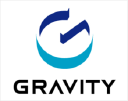
FMP

Gravity Co., Ltd.
GRVY
NASDAQ
Gravity Co., Ltd. develops and publishes online and mobile games in South Korea, Taiwan, Thailand, and Japan. The company offers a massively multiplayer online role-playing game, including Ragnarok Online, Dragonica, Ragnarok Online II, and Ragnarok Prequel II. Its mobile games portfolio includes Ragnarok M: Eternal Love; Ragnarok Origin; Ragnarok X: Next Generation; the Labyrinth of Ragnarok; Ragnarok Poring Merge; Tera Classic; Ragnarok: The Lost Memories; Sadako M; NBA: Rise To Stardom; Milkmaid Of The Milky Way; and Paladog Tactics. The company also provides console games, such as Ragnarok DS for Nintendo DS; Ragnarok: The Princess of Light and Darkness for PlayStation Portable; Ragnarok Odyssey for PlayStation Vita; Double Dragon II for Xbox 360; Ragnarok Odyssey Ace for PlayStation Vita and PlayStation 3; and GRANDIA HD Collection for Nintendo Switch. In addition, it offers games for IPTV, including Pororo: The Little Penguin; and markets dolls, stationery, food, and other character-based merchandises, as well as game manuals, monthly magazines, and other publications. Further, the company provides system development and maintenance services, as well as system integration services to third parties. As of December 31, 2021, it owned 156 registered domain names. The company was incorporated in 2000 and is headquartered in Seoul, South Korea. Gravity Co., Ltd. is a subsidiary of GungHo Online Entertainment, Inc.
61.97 USD
-0.03 (-0.04841%)
